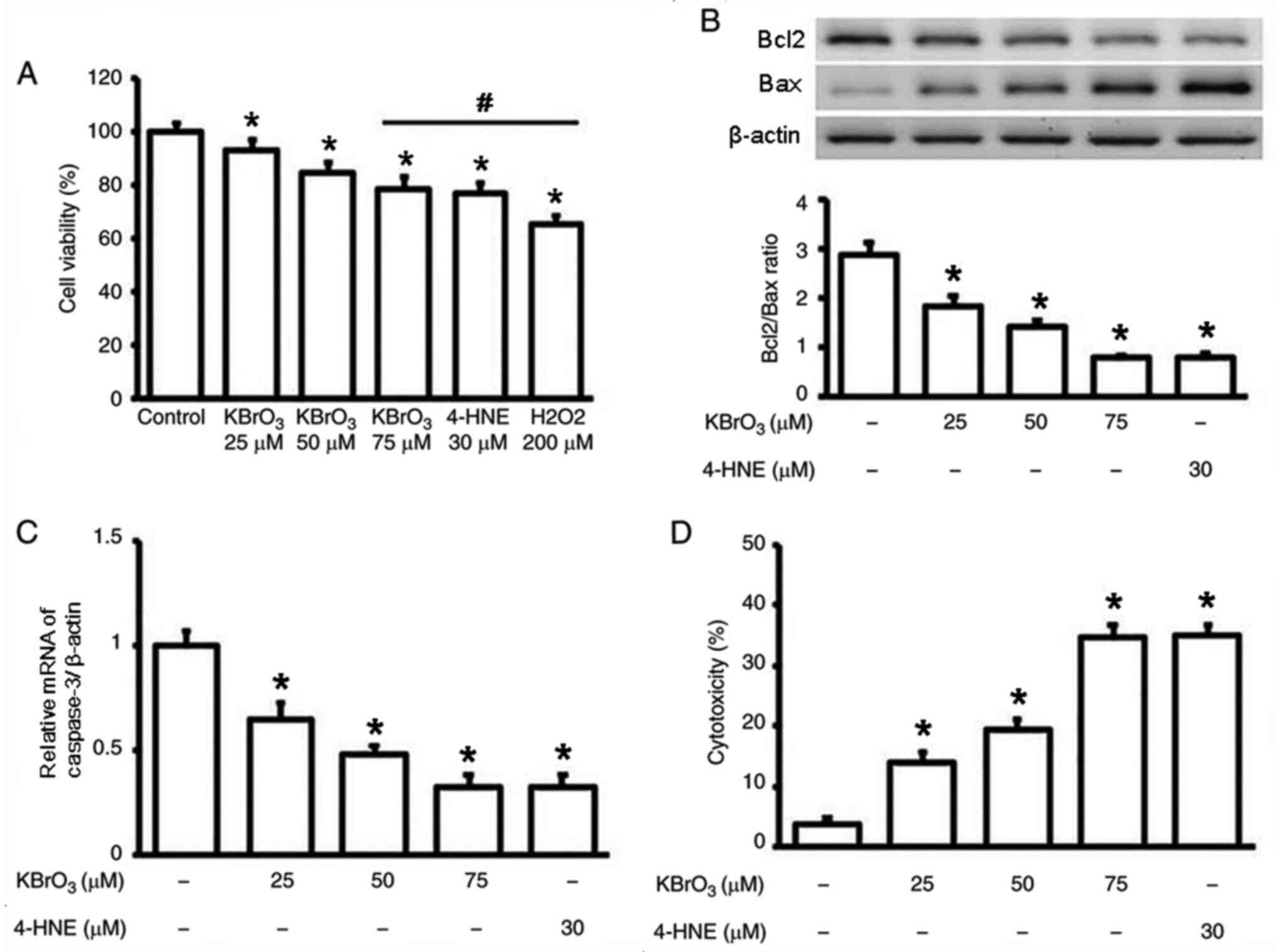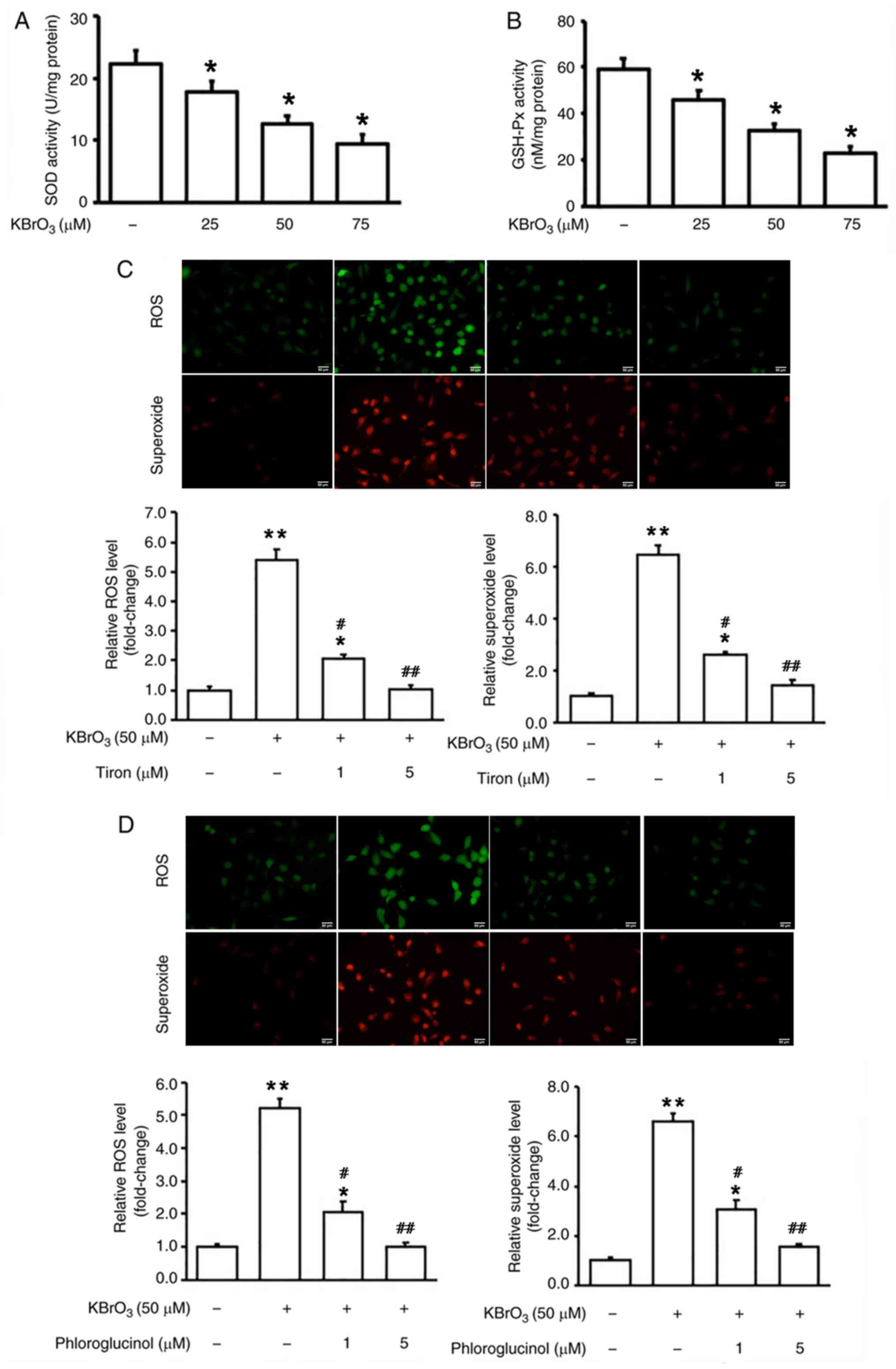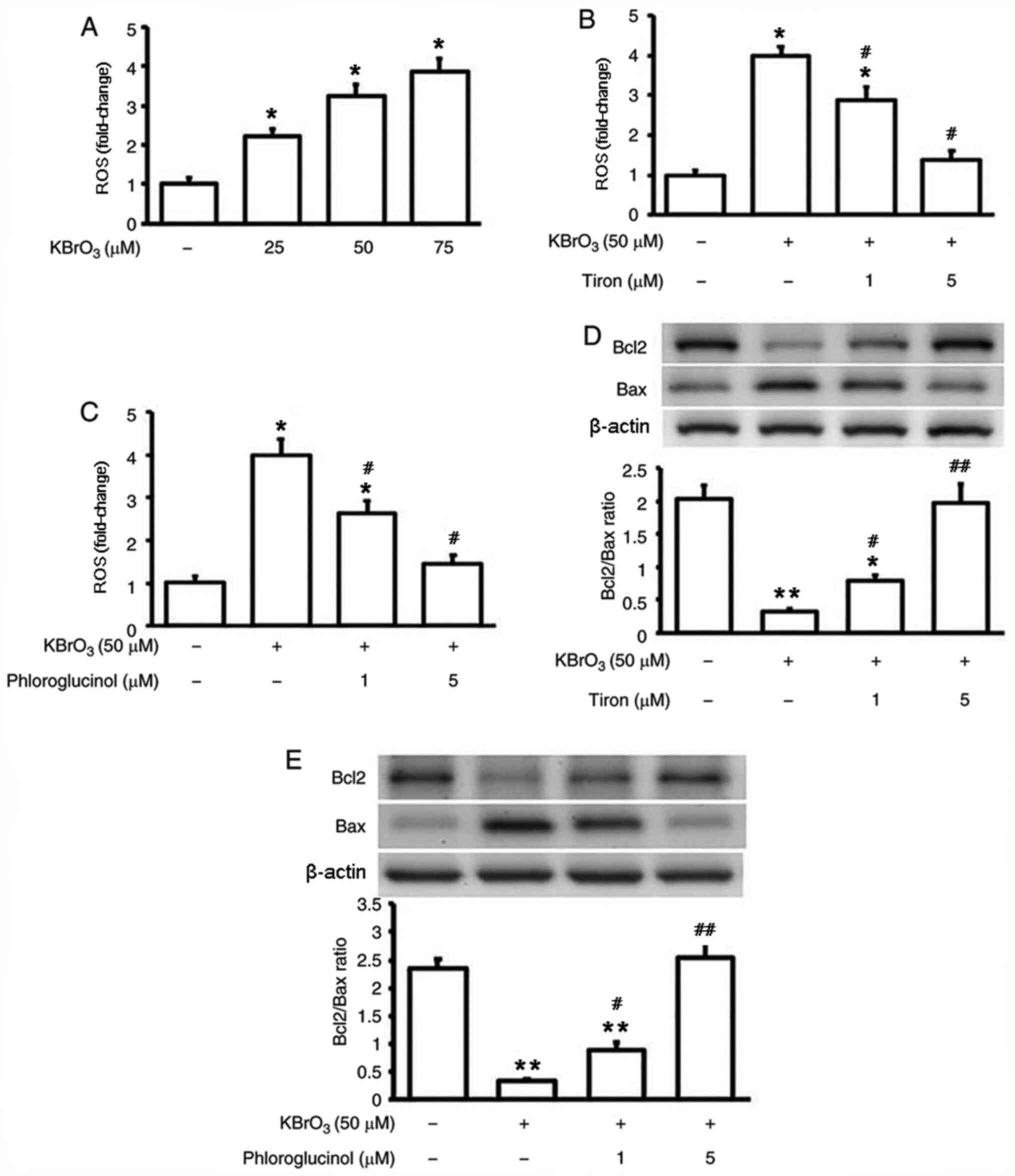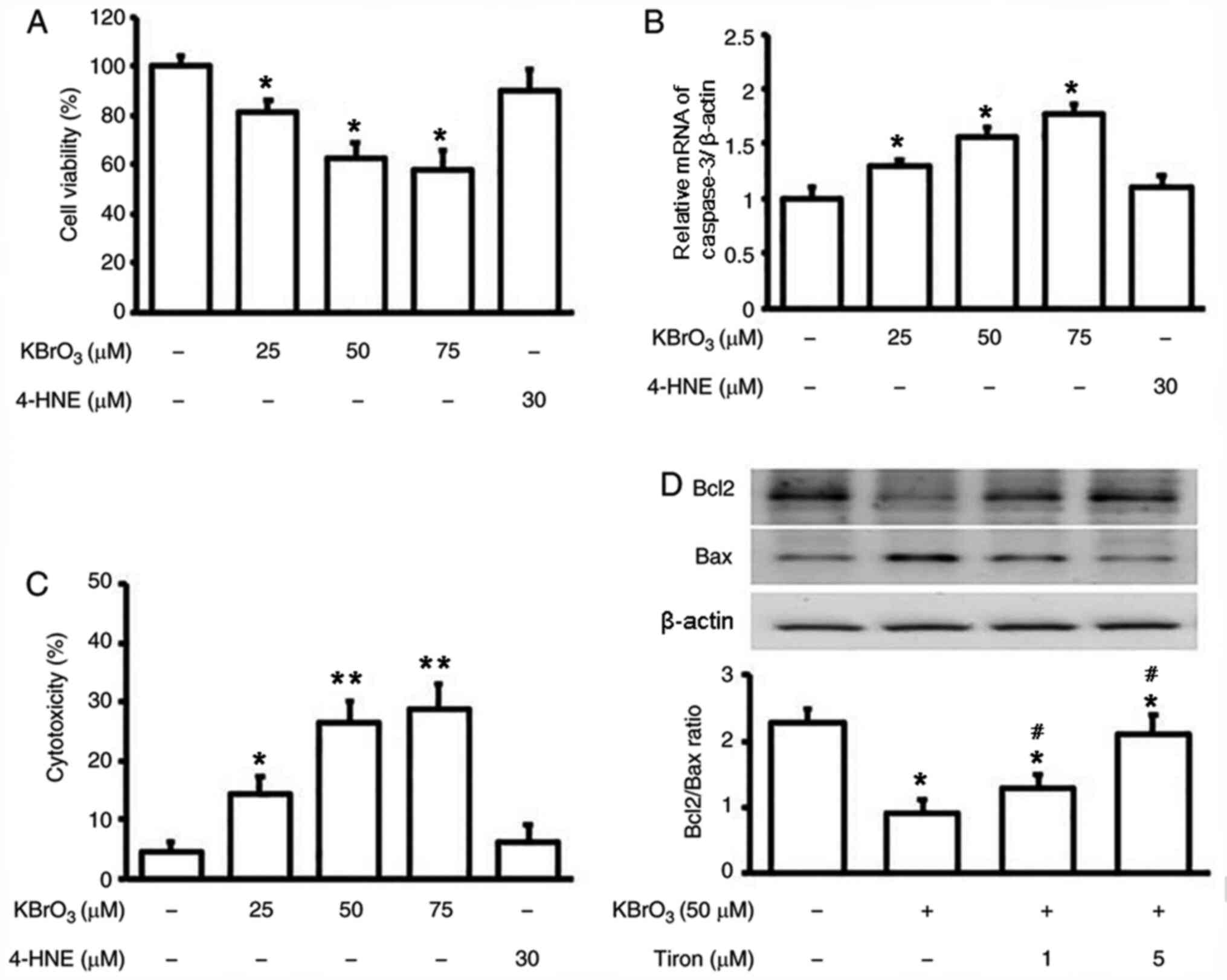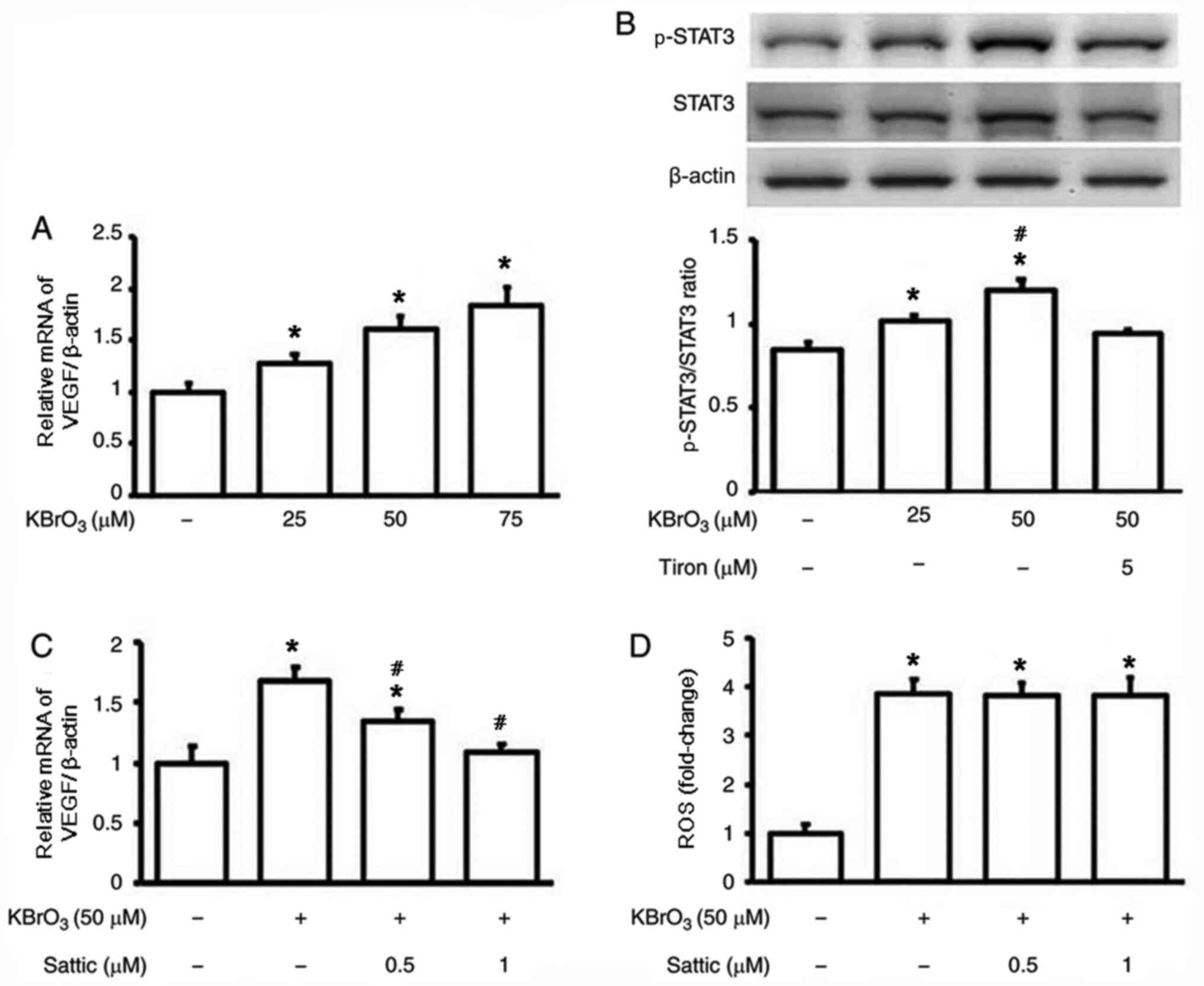|
1
|
Datta S, Cano M, Ebrahimi K, Wang L and
Handa JT: The impact of oxidative stress and inflammation on RPE
degeneration in non-neovascular AMD. Prog Retin Eye Res.
60:201–218. 2017. View Article : Google Scholar : PubMed/NCBI
|
|
2
|
van Lookeren Campagne M, LeCouter J,
Yaspan BL and Ye W: Mechanisms of age-related macular degeneration
and therapeutic opportunities. J Pathol. 232:151–164. 2014.
View Article : Google Scholar : PubMed/NCBI
|
|
3
|
Jager RD, Mieler WF and Miller JW:
Age-related macular degeneration. N Engl J Med. 358:2606–2617.
2008. View Article : Google Scholar : PubMed/NCBI
|
|
4
|
Chen Y, Bedell M and Zhang K: Age-related
macular degeneration: Genetic and environmental factors of disease.
Mol Interv. 10:271–281. 2010. View Article : Google Scholar : PubMed/NCBI
|
|
5
|
Coleman HR, Chan CC, Ferris FL III and
Chew EY: Age-related macular degeneration. Lancet. 372:1835–1845.
2008. View Article : Google Scholar : PubMed/NCBI
|
|
6
|
Bhutto I and Lutty G: Understanding
age-related macular degeneration (AMD): Relationships between the
photoreceptor/retinal pigment epithelium/Bruch's
membrane/choriocapillaris complex. Mol Aspects Med. 33:295–317.
2012. View Article : Google Scholar : PubMed/NCBI
|
|
7
|
Ding X, Patel M and Chan CC: Molecular
pathology of age-related macular degeneration. Prog Retin Eye Res.
28:1–18. 2009. View Article : Google Scholar : PubMed/NCBI
|
|
8
|
Lorés-Motta L, de Jong EK and den
Hollander AI: Exploring the use of molecular biomarkers for
precision medicine in age-related macular degeneration. Mol Diagn
Ther. 22:315–343. 2018. View Article : Google Scholar : PubMed/NCBI
|
|
9
|
Bonilha VL: Oxidative Stress Regulation
and DJ-1 Function in the Retinal Pigment Epithelium: Implications
for AMD. Adv Exp Med Biol. 1074:3–9. 2018. View Article : Google Scholar : PubMed/NCBI
|
|
10
|
Liang FQ and Godley BF: Oxidative
stress-induced mitochondrial DNA damage in human retinal pigment
epithelial cells: A possible mechanism for RPE aging and
age-related macular degeneration. Exp Eye Res. 76:397–403. 2003.
View Article : Google Scholar : PubMed/NCBI
|
|
11
|
Wihlmark U, Wrigstad A, Roberg K, Brunk UT
and Nilsson SE: Lipofuscin formation in cultured retinal pigment
epithelial cells exposed to photoreceptor outer segment material
under different oxygen concentrations. APMIS. 104:265–271. 1996.
View Article : Google Scholar : PubMed/NCBI
|
|
12
|
Hu X, Liang Y, Zhao B and Wang Y:
Thymoquinone protects human retinal pigment epithelial cells
against hydrogen peroxide induced oxidative stress and apoptosis. J
Cell Biochem. 120:4514–4522. 2019. View Article : Google Scholar : PubMed/NCBI
|
|
13
|
Lu L, Hackett SF, Mincey A, Lai H and
Campochiaro PA: Effects of different types of oxidative stress in
RPE cells. J Cell Physiol. 206:119–125. 2006. View Article : Google Scholar : PubMed/NCBI
|
|
14
|
Shen C, Ma W, Zheng W, Huang H, Xia R, Li
C and Zhu X: The antioxidant effects of riluzole on the APRE-19
celll model injury-induced by t-BHP. BMC Ophthalmol. 17:2102017.
View Article : Google Scholar : PubMed/NCBI
|
|
15
|
Abdel-Wahab WM: Thymoquinone attenuates
toxicity and oxidative stress induced by bisphenol A in liver of
male rats. Pak J Biol Sci. 17:1152–1160. 2014. View Article : Google Scholar : PubMed/NCBI
|
|
16
|
Sheu SJ, Chao YM, Liu NC and Chan JY:
Differential effects of bevacizumab, ranibizumab and aflibercept on
cell viability, phagocytosis and mitochondrial bioenergetics of
retinal pigment epithelial cell. Acta Ophthalmol. 93:e631–e643.
2015. View Article : Google Scholar : PubMed/NCBI
|
|
17
|
Cunningham DK and Anderson JA:
Decomposition of bromate in fermenting and nonfermenting doughs.
Cereal Chem. 33:290–299. 1956.
|
|
18
|
Zhang Y, Jiang L, Jiang L, Geng C, Li L,
Shao J and Zhong L: Possible involvement of oxidative stress in
potassium bromate-induced genotoxicity in human HepG2 cells. Chem
Biol Interact. 189:186–191. 2011. View Article : Google Scholar : PubMed/NCBI
|
|
19
|
Kuo SC, Li Y, Cheng YZ, Lee WJ, Cheng JT
and Cheng KC: Molecular mechanisms regarding potassium bromate
induced cardiac hypertrophy without apoptosis in H9c2 cells. Mol
Med Rep. 18:4700–4708. 2018.PubMed/NCBI
|
|
20
|
Watanabe S, Togashi S and Fukui T:
Contribution of nitric oxide to potassium bromate-induced elevation
of methaemoglobin concentration in mouse blood. Biol Pharm Bull.
25:1315–1319. 2002. View Article : Google Scholar : PubMed/NCBI
|
|
21
|
Li CJ, Lv L, Li H and Yu DM: Cardiac
fibrosis and dysfunction in experimental diabetic cardiomyopathy
are ameliorated by alpha-lipoic acid. Cardiovasc Diabetol.
11:732012. View Article : Google Scholar : PubMed/NCBI
|
|
22
|
Liu WY, Liou SS, Hong TY and Liu IM: The
benefits of the citrus flavonoid diosmin on human retinal pigment
epithelial cells under high-glucose conditions. Molecules.
22:22512017. View Article : Google Scholar
|
|
23
|
Hytti M, Piippo N, Salminen A, Honkakoski
P, Kaarniranta K and Kauppinen A: Quercetin alleviates
4-hydroxynonenal-induced cytotoxicity and inflammation in ARPE-19
cells. Exp Eye Res. 132:208–215. 2015. View Article : Google Scholar : PubMed/NCBI
|
|
24
|
Livak KJ and Schmittgen TD: Analysis of
relative gene expression data using real-time quantitative PCR and
the 2(-Delta Delta C(T)) method. Methods. 25:402–408. 2001.
View Article : Google Scholar : PubMed/NCBI
|
|
25
|
Salakou S, Kardamakis D, Tsamandas AC,
Zolota V, Apostolakis E, Tzelepi V, Papathanasopoulos P, Bonikos
DS, Papapetropoulos T, Petsas T, et al: Increased Bax/Bcl-2 ratio
up-regulates caspase-3 and increases apoptosis in the thymus of
patients with myasthenia gravis. In Vivo. 21:123–132.
2007.PubMed/NCBI
|
|
26
|
Wang Y, Shen D, Wang VM, Yu CR, Wang RX,
Tuo J and Chan CC: Enhanced apoptosis in retinal pigment epithelium
under inflammatory stimuli and oxidative stress. Apoptosis.
17:1144–1155. 2012. View Article : Google Scholar : PubMed/NCBI
|
|
27
|
Sharma A, Sharma R, Chaudhary P, Vatsyayan
R, Pearce V, Jeyabal PV, Zimniak P, Awasthi S and Awasthi YC:
4-Hydroxynonenal induces p53-mediated apoptosis in retinal pigment
epithelial cells. Arch Biochem Biophys. 480:85–94. 2008. View Article : Google Scholar : PubMed/NCBI
|
|
28
|
Gautam J, Banskota S, Shah S, Jee JG, Kwon
E, Wang Y, Kim DY, Chang HW and Kim JA: 4-Hydroxynonenal-induced
GPR109A (HCA2 receptor) activation elicits bipolar responses,
Gαi-mediated anti-inflammatory effects and Gβγ-mediated cell death.
Br J Pharmacol. 175:2581–2598. 2018. View Article : Google Scholar : PubMed/NCBI
|
|
29
|
Li G, Shi Y, Huang H, Zhang Y, Wu K, Luo
J, Sun Y, Lu J, Benovic JL and Zhou N: Internalization of the human
nicotinic acid receptor GPR109A is regulated by G(i), GRK2, and
arrestin3. J Biol Chem. 285:22605–22618. 2010. View Article : Google Scholar : PubMed/NCBI
|
|
30
|
Wang X, Ma W, Han S, Meng Z, Zhao L, Yin
Y, Wang Y and Li J: TGF-β participates choroid neovascularization
through Smad2/3-VEGF/TNF-α signaling in mice with Laser-induced wet
age-related macular degeneration. Sci Rep. 7:96722017. View Article : Google Scholar : PubMed/NCBI
|
|
31
|
Ushio-Fukai M and Nakamura Y: Reactive
oxygen species and angiogenesis: NADPH oxidase as target for cancer
therapy. Cancer Lett. 266:37–52. 2008. View Article : Google Scholar : PubMed/NCBI
|
|
32
|
Wei D, Le X, Zheng L, Wang L, Frey JA, Gao
AC, Peng Z, Huang S, Xiong HQ, Abbruzzese JL, et al: Stat3
activation regulates the expression of vascular endothelial growth
factor and human pancreatic cancer angiogenesis and metastasis.
Oncogene. 22:319–329. 2003. View Article : Google Scholar : PubMed/NCBI
|
|
33
|
Ethen CM, Reilly C, Feng X, Olsen TW and
Ferrington DA: Age-related macular degeneration and retinal protein
modification by 4-hydroxy-2-nonenal. Invest Ophthalmol Vis Sci.
48:3469–3479. 2007. View Article : Google Scholar : PubMed/NCBI
|
|
34
|
Raza H and John A: 4-hydroxynonenal
induces mitochondrial oxidative stress, apoptosis and expression of
glutathione S -transferase A4-4 and cytochrome P450 2E1 in PC12
cells. Toxicol Appl Pharmacol. 216:309–318. 2006. View Article : Google Scholar : PubMed/NCBI
|
|
35
|
Oyewole AO and Birch-Machin MA:
Mitochondria-targeted antioxidants. FASEB J. 29:4766–4771. 2015.
View Article : Google Scholar : PubMed/NCBI
|
|
36
|
Cia D, Cubizolle A, Crauste C, Jacquemot
N, Guillou L, Vigor C, Angebault C, Hamel CP, Vercauteren J and
Brabet P: Phloroglucinol protects retinal pigment epithelium and
photoreceptor against all-trans-retinal-induced toxicity and
inhibits A2E formation. J Cell Mol Med. 20:1651–1663. 2016.
View Article : Google Scholar : PubMed/NCBI
|
|
37
|
Calabrèse A, Bernard JB, Hoffart L, Faure
G, Barouch F, Conrath J and Castet E: Wet versus dry age-related
macular degeneration in patients with central field loss: Different
effects on maximum reading speed. Invest Ophthalmol Vis Sci.
52:2417–2424. 2011. View Article : Google Scholar : PubMed/NCBI
|
|
38
|
Li X, Cai Y, Wang YS, Shi YY, Hou W, Xu
CS, Wang HY, Ye Z, Yao LB and Zhang J: Hyperglycaemia exacerbates
choroidal neovascularisation in mice via the oxidative
stress-induced activation of STAT3 signalling in RPE cells. PLoS
One. 7:e476002012. View Article : Google Scholar : PubMed/NCBI
|
|
39
|
Dural E, Shah UK, Pritchard D, Chapman KE,
Doak SH and Jenkins GJ: The effect of chronic dosing and p53 status
on the genotoxicity of pro-oxidant chemicals in vitro. Mutagenesis
geaa024. 2020. View Article : Google Scholar
|
|
40
|
Kurokawa Y, Maekawa A, Takahashi M and
Hayashi Y: Toxicity and carcinogenicity of potassium bromate--a new
renal carcinogen. Environ Health Perspect. 87:309–335. 1990.
View Article : Google Scholar : PubMed/NCBI
|
|
41
|
Parsons JL and Chipman JK: The role of
glutathione in DNA damage by potassium bromate in vitro.
Mutagenesis. 15:311–316. 2000. View Article : Google Scholar : PubMed/NCBI
|
|
42
|
Giri U, Iqbal M and Athar M: Potassium
bromate (KBrO3) induces renal proliferative response and
damage by elaborating oxidative stress. Cancer Lett. 135:181–188.
1999. View Article : Google Scholar : PubMed/NCBI
|
|
43
|
Khan RA, Khan MR and Sahreen S: Protective
effects of rutin against potassium bromate induced nephrotoxicity
in rats. BMC Complement Altern Med. 12:2042012. View Article : Google Scholar : PubMed/NCBI
|















